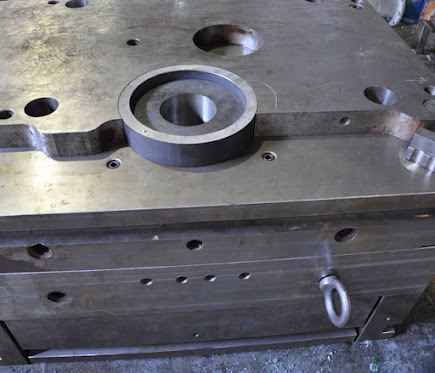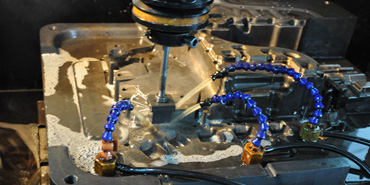Die-casting in aluminum die casting mold results in good dimensional accuracy, a more uniform part, and a good surface finish, and, as good as 0.2 % of casting dimension.
With the use of a cold chamber or hot chamber process die-casting can be performed.
•In a cold chamber process, for each shot the molten metal is ladled into the cold chamber. To the plunger walls or the plunger, there is less time exposure of the melt. For metals such as Aluminum, and Copper this is particularly useful as these metals at higher temperatures alloy easily with Iron.
• The pressure chamber in a hot chamber process is connected to the die cavity and is permanently immersed in the molten metal. As the plunger moves to the open position the inlet port of the pressurizing cylinder is uncovered. To fill the cavity this allows a new charge of molten metal and thus compared to the cold chamber process it can fill the cavity faster. The hot chamber process is quite suitable for metals of low melting point and high fluidity such as lead, tin, and zinc as they tend not to alloy easily with steel at their melt temperatures.
For the casting of metal products die casting with aluminum die casting mold design is a popular manufacturing process. There are two main die casting process types and many variations in process design. At high pressure when molten metal is forced into mold cavities, it is referred to as die casting. For the speedy production of bulk metallic parts that require minimal post-production machining, the process is the best option.
The major pros of the process of die casting include:
- High quality: through die casting parts that are created to deliver a long service life.
- Minimal
assembly: Into mold
design assembly features such as studs, drill holes, and bosses can be
integrated.
- Quick production: Minimal maintenance is required by die cast tooling.
- Versatile design: Die casting can create virtually any surface texture, size, part geometry, or luster.









